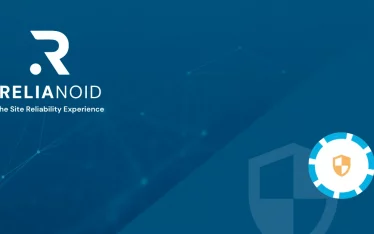Cybersecurity and sustainability are increasingly becoming strategic pillars for modern industrial management. These two disciplines, though distinct in nature, share a common objective: to ensure ethical, resilient, and responsible operations. This convergence was at the heart of the recent event organized by the Industrial Cybersecurity Center (CCI), where experts across sectors gathered to explore this emerging synergy.As Carlos Arango, Director at DIRSE, stated: “If I had to summarize the relationship between cybersecurity and sustainability in one word, it would be trust.”
What is Industrial Cyber-Sustainability?
Industrial cyber-sustainability integrates cybersecurity practices within OT (Operational Technology) environments while aligning with ESG principles. This means not only defending critical assets from cyber threats but also managing digital and natural resources responsibly.
According to María Fernández, Industrial Cybersecurity Lead at Urbaser: “By protecting our plants, we protect our ability to generate circular resources and energy.”
When cybersecurity and sustainability work hand in hand, organizations gain:
- Stronger operational resilience
- Improved energy efficiency
- Greater transparency and trust across supply chains
Sector Insights: What Are Industrial Professionals Saying?
A recent CCI survey of 28 industrial organizations revealed a revealing snapshot:
- Only 26.67% currently align cybersecurity and sustainability strategies.
- 93.3% believe integration would improve long-term resilience.
- Main barriers: lack of clear objectives, poor collaboration, limited budgets.
- Top benefits: improved risk and supply chain management, enhanced resilience.
The 3Rs of Cyber-Sustainability
Inspired by the environmental “Reduce, Reuse, Recycle” model, the 3Rs in cyber-sustainability can guide digital transformation:
Recycle
Audit and assess digital processes to update, maintain, or phase out. Clearly define responsibilities over digital and physical assets.
Reduce
Standardize and automate to eliminate redundancy, free up human talent for strategic tasks, and reduce inefficient digital “waste.”
Reuse
Retrain personnel and reuse robust architectures. Measure both cybersecurity and operational efficiency with reliable indicators.
The Rise of the ICSO: A Key Figure in Industrial Resilience
The Industrial Cybersecurity Officer (ICSO) is becoming a strategic role, coordinating cybersecurity with sustainability efforts. According to the CCI report, ICSOs:
- Design OT-specific cybersecurity strategies
- Secure supply chains
- Lead cybersecurity culture and training initiatives
- Facilitate collaboration across IT, OT, legal, and sustainability teams
“I help ensure cybersecurity is seen as an investment, not a cost,” shared José Luis Gallego from Moeve Chemicals.
Building a Resilient Future with RELIANOID
At RELIANOID, we understand the growing need to combine robust cybersecurity with sustainable practices in industrial environments. Our solutions are designed to help organizations:
- Ensure Operational Continuity – Through hot-restart capabilities and high-availability proxies.
- Reduce Digital Footprint – With lightweight, high-performance deployments optimized for energy and hardware efficiency.
- Promote Secure by Design Architectures – Supporting zero-trust environments, mTLS, and advanced segmentation from the start.
- Improve Governance and Transparency – With integrated observability, SIEM compatibility, and role-based access control.
RELIANOID’s secure reverse proxy and load balancer capabilities support ICSOs and OT engineers in protecting critical infrastructure without compromising on innovation or sustainability goals.
Culture and Training: The Foundation of Cyber-Sustainability
Technology alone isn’t enough. As experts at the CCI forum highlighted, training and leadership are essential. With over 1600 professionals already trained by the CCI across sectors such as energy, water, manufacturing, and transport, awareness and skills are spreading rapidly.
“Cybersecurity must be close to the business to be seen as an enabler,” emphasized David Andrés of Naturgy.
And as María Fernández noted: “From finance to maintenance, everyone needs department-specific training.”
Conclusion: A Greener Industry Needs a Safer Industry
Cyber-sustainability is not just about protecting assets—it’s about building an ethical, efficient, and future-ready industrial model. And for that, having the right tools matters. RELIANOID is proud to support organizations on this journey with secure, scalable, and sustainable infrastructure solutions.
Learn more about how RELIANOID can help you build a resilient and responsible future: Contact us now




